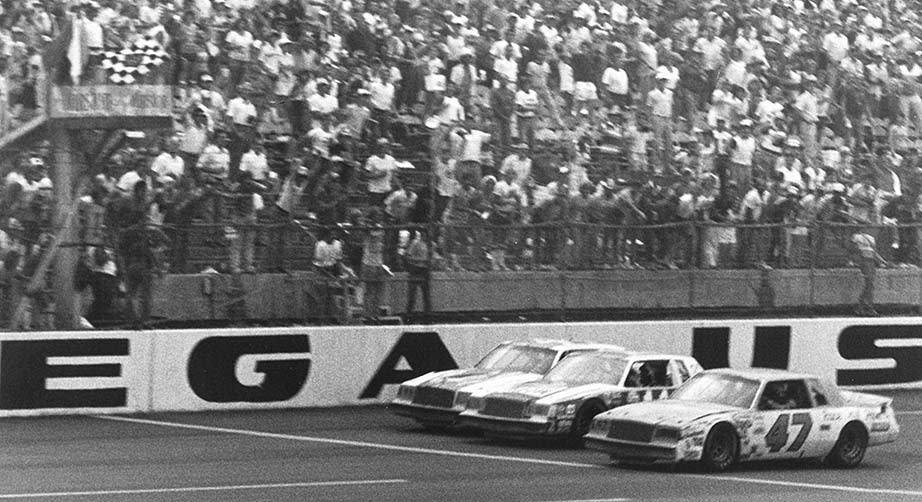Off-center: How Talladega's start-finish line placement came to be
“They should have put it up nearer the tri-oval. It’s almost down to the first turn. I never have understood that.”
Darrell Waltrip had every reason to be dumbfounded when he said those words in 1981. He was speaking about Talladega Superspeedway’s start-finish line, a quirky nuance that added to the off-center nature of the place. To Waltrip, it was a design flaw.
Waltrip led that year’s Talladega 500 on the white-flag lap. Through the tri-oval, Waltrip tried to fend off the high-groove advances of Terry Labonte running second with the checkered flag in sight. When he did, Ron Bouchard dove low in his No. 47 Buick, slipping by both of them in the home stretch to the start-finish line to score his only Cup Series win by approximately two feet. “Just plain sneaky,” Waltrip mused later.
RELATED: Talladega weekend schedule | Buy tickets
Had the start-finish line been centrally located in the tri-oval bend, as it was at its sister track in Daytona, the race would have been settled between Waltrip and Labonte. Instead, Bouchard — a standout Modified driver from the northeast who was a relative unknown in the south — used the extra 1,250 feet of race track to score one of NASCAR’s biggest upsets.

Waltrip may understand it now, but the start-finish line location has been a part of the mystique — or its speedway feng shui — since the 2.66-mile track opened its doors as Alabama International Motor Speedway in 1969. To this day, announcers offer perennial reminders about the idiosyncrasy during race broadcasts and how it might affect the outcome.
The lingering question is “why there?” The answers, simple as they are, have roots that date back to the track’s origins.
NASCAR founder Bill France Sr. modeled the track’s layout after Daytona International Speedway, but made it just a bit longer and a tad steeper in the banked turns. The start-finish line’s position nearly a quarter-mile past the center point was a flourish designed to give a race’s finish more space to build to a crescendo along the main grandstand, a perk for potential ticket buyers.
“This will give the fans two prime places to sit rather than just one,” said Roger Bear, Talladega’s first general manager and publicist, explaining the configuration to United Press International in 1969. “They can sit either in front of the start-finish line or in front of the pits. It simply means more good seats.”
Fans occupying those seats have seen their share of dynamic moments. Four of the seven closest finishes in NASCAR Cup Series history have occurred at Talladega at that symmetry-averse stripe.
The area has also been the site of suspenseful crashes. Team owner Jack Roush proposed moving Talladega’s start-finish line in 2009 after Carl Edwards’ No. 99 Ford sailed into the catch-fencing after last-lap contact with eventual first-time winner Brad Keselowski. Roush reasoned that had the finish line been in the tri-oval, their contact would have unfolded in the straight chute off Turn 4 instead of at an angle with the protective barrier. It’s worth noting that the same sorts of high-speed wrecks have occurred at Daytona with its more natural start-finish line placement.
Even with the conjecture, Talladega’s start-finish line has endured in the same spot for more than 50 years. When the reminder inevitably pops up during the race broadcast’s track analysis, now you’ll know why.
“For whatever reason they decided to put it there, the results have been tremendous over the years,” says Alabama native Donnie Allison, who posted two of his 10 Cup Series wins on Talladega’s high banks. “Now maybe some of the drivers didn‘t like it, but for what we were there for, which was to put on a good show for the fans, I think it was an excellent choice.”

